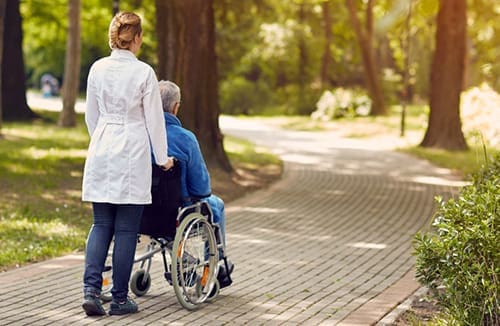While first introduced as a nice-to-have application to help track residents, Real Time Location Systems, or RTLS, has grown into a must-have technology for senior living when integrated with life safety technology. The combined solution offers a range of applications from contract tracing and case management to resident safety and efficient caregiver routing that improve health outcomes, caregiver efficiency and family confidence.
Veteran senior living experts probably remember that RTLS was first introduced to the industry as a marketing concept, one used to keep track of residents. The early versions simply displayed dots on a screen.
Now, however, RTLS-based Life Safety systems provide a wealth of information and data that can be used to make decisions about a resident’s health, his or her socialization, safety, or proximity to an infectious person in the past 24 hours. It can also provide data to families who want to know when their mom or dad woke up and the activities they are enjoying.
The following are five reasons why an RTLS-based Life Safety and eCall system should be a priority for you and your community going forward.
Keep Residents Safe
Residents who wander into other residents’ rooms can be challenging to manage because unwelcome entries can be upsetting to the resident who lives in that room. Because resident apartments in memory care facilities aren’t typically locked, RTLS can notify staff when a person with a tracked device enters or leaves.
Similarly, if two people who don’t get along are in the same room, or one enters a room where the other one is located, a caregiver can receive an alert and divert one of those people before an argument occurs.
At facilities with higher levels of residents with dementia, eCall systems with RTLS can notify caregivers if a person is loitering near an exit so someone can check on that person.
These early alerts allow caregivers to anticipate and act before an incident occurs and reduce risk.

Spot Health Concerns Faster
When the same caregivers interact with residents every day, they may not notice subtle changes that could indicate a health concern. For example, if you see someone every day, you might not notice that they gained ten pounds. Some say a resident would have to decline 10 percent before even the most astute caregiver noticed. But what if a caregiver could intervene earlier?
An eCall system with RTLS monitors a resident, continually gathering data that it can analyze. Using this data, the technology can predict what any potential changes mean. That information can help them recognize and respond to a health concern before it needs medical intervention.
Keep Track of Medical, Health Equipment
When built into an eCall system, RTLS can track tags on medical devices such as oxygen tanks and walkers. When a resident requires a certain device, such as a walker, caregivers receive an alarm to intercept a resident who is attempting to walk without that device, which can help prevent falls.
In addition, medical supplies can be tagged making them easier to locate when a caregiver needs a particular device. Knowing the exact location eliminates needless searching and wasting time retrieving the device, which means a caregiver can respond to and assist a resident faster.
Keep Families Informed
One of the hardest parts of placing a loved one in a community is not knowing what they are doing every day.
With access to an eCall system with RTLS, families can see that “mom” regularly visits the dining room during mealtimes, and attends activities meaningful to her, such as a regularly scheduled exercise class.
Infection Management
The pandemic required senior living employees to track residents like never before. Overnight, communities needed to put protocols in place for social distancing, contact tracing and isolation management, especially when a resident was quarantined.
RTLS makes contact tracing, or identifying the people exposed to an illness, as easy as pushing a couple of buttons. With RTLS, you know the rooms that people have been in, the length of time they were there and the other residents in the room at the same time; whether it was yesterday, last week or last month.
It removes the need for staff to physically interview residents about their routines and remember who else might have been in the room. RTLS can also identify when a room has reached capacity and make it easier for caregivers to limit people in a room, which removes the need to frequently and physically count people.
RTLS systems can also reinforce isolation protocols using alerts when a perimeter is broken or provide insight to caregivers, notifying them of the appropriate PPE needed to interact with a resident in isolation.
eCall System with RTLS Worth Consideration
As part of an eCall system, RTLS has come a long way from its humble beginnings as a blue dot tracker. If your community plans to increase technology spending like the 80% of respondents that answered a Senior Housing News survey addressing Covid-19 Pandemic challenges, eCall systems with built-in RTLS are worth consideration.
The technology can help your residents feel more secure and independent, make your staff more efficient and give your family members confidence that their loved one is in the best possible community. An RTLS-powered eCall system is now so much more than a location-only technology.
Learn more about how you can utilize the RTLS-based Ensure360SM life safety platform from Sentrics.



